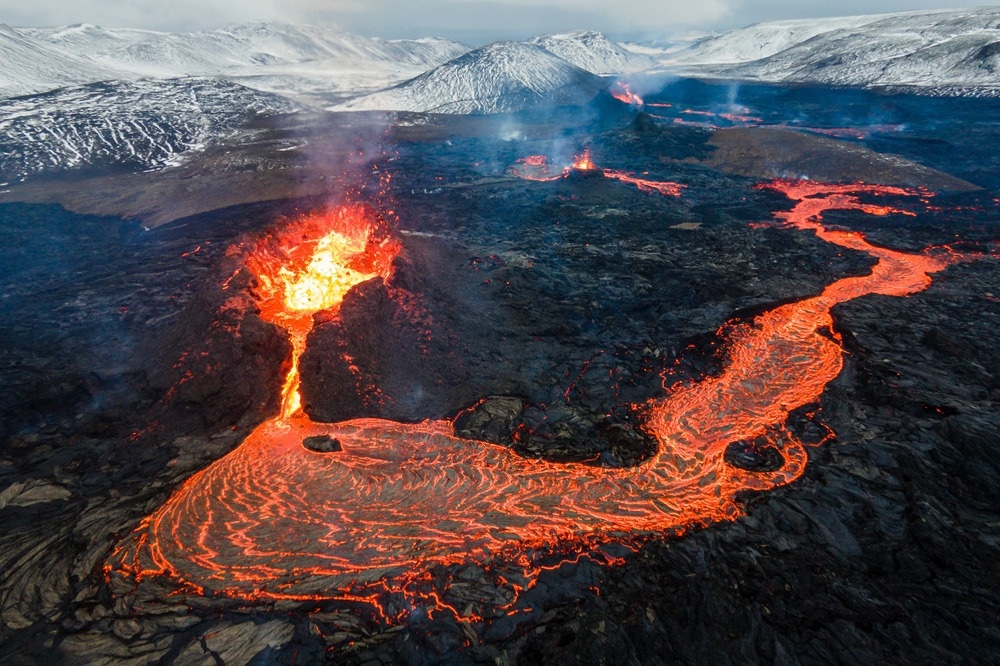According to research published in Science Advances, simulated volcanic eruptions may destroy the ability to predict near-term climate.

Image Credit: ImageBank4u/Shutterstock.com
The study, led by the National Center for Atmospheric Research (NCAR), discovers that the way volcanic eruptions are represented in climate models may be masking the models’ ability to accurately predict variations in tropical Pacific Sea surface temperatures that occur over several years to a decade.
These decadal variations in tropical Pacific Sea surface temperatures are linked to global climate impacts, such as precipitation and severe weather. Accurate predictions could provide important climate information to community leaders, farmers, water managers, and others, allowing them to plan years in advance.
Near-term climate prediction on annual to decadal timescales is a rapidly growing and important field in the climate community because it bridges the gap between existing seasonal forecasts and centennial climate projections. When we rely on models to make these predictions, it’s important to carefully consider the model’s fidelity. In this case, we found that model errors in simulating the response to volcanic eruptions degraded our prediction skill.
Xian Wu, National Center for Atmospheric Research
Xian Wu led the study as a postdoctoral researcher.
The US National Science Foundation, NCAR’s sponsor, the US Department of Energy, and NOAA supported the study.
Wu and her co-workers used two simultaneous collections of climate simulations from the Decadal Prediction Large Ensemble, a dataset generated using the NCAR-based Community Earth System Model, for the research.
These simulations were run as hindcasts, covering the years 1954–2015, enabling researchers to contrast the simulations to what happened and assess their ability to predict the future.
One simulation set comprised the three significant volcanic eruptions that happened during the study period: Agung (1963), El Chichón (1982), and Pinatubo (1991). The other collection did not.
Because it is well known that big volcanic eruptions can have significant long-term cooling effects on the climate, Wu and her co-workers predicted the collection of simulations that included the volcanic eruptions to provide more precise multiyear and decadal climate projections.
They discovered that including the eruptions demeaned the model’s predictive ability, at least in the tropical Pacific. This area is critical because of the connections between sea surface temperatures and near-term climate events.
For instance, the simulations that included the volcanoes indicated a subsequent decrease of sea surface temperatures in the tropical Pacific following the eruptions. In actuality, that ocean area warmed, as indicated by simulations that did not include the volcanic eruptions.
The observations underscore the difficulties of adequately capturing the complex climate repercussions resulting from a volcanic eruption in a model, a task made more difficult because scientists only have a few real-life examples in the observational record.
Researchers have determined that volcanoes can propel sulfur fumes into the stratosphere, where they can change into sunlight-reflecting aerosols. However, how the consequent cooling impacts the entire Earth system, including sea surface temperatures is unclear.
We just don’t have enough observations. And our methods to observe what is happening in the stratosphere have only been available since the satellite era, which means we only have Chichón and Pinatubo.
Xian Wu, National Center for Atmospheric Research
However, Wu is optimistic that models’ representations of volcanic eruptions and their repercussions will improve significantly. This effort will improve the ability to forecast significant climate events years in advance.
Decadal variability in the tropical pacific is an important source of predictability worldwide. It affects climate over the surrounding continents, as well as marine ecosystems. Better predictions will provide important information for stakeholders.
Xian Wu, National Center for Atmospheric Research
Journal Reference
Wu, X., et al. (2023). Volcanic forcing degrades multiyear-to-decadal prediction skill in the tropical Pacific. Science Advances. doi.org/10.1126/sciadv.add9364.